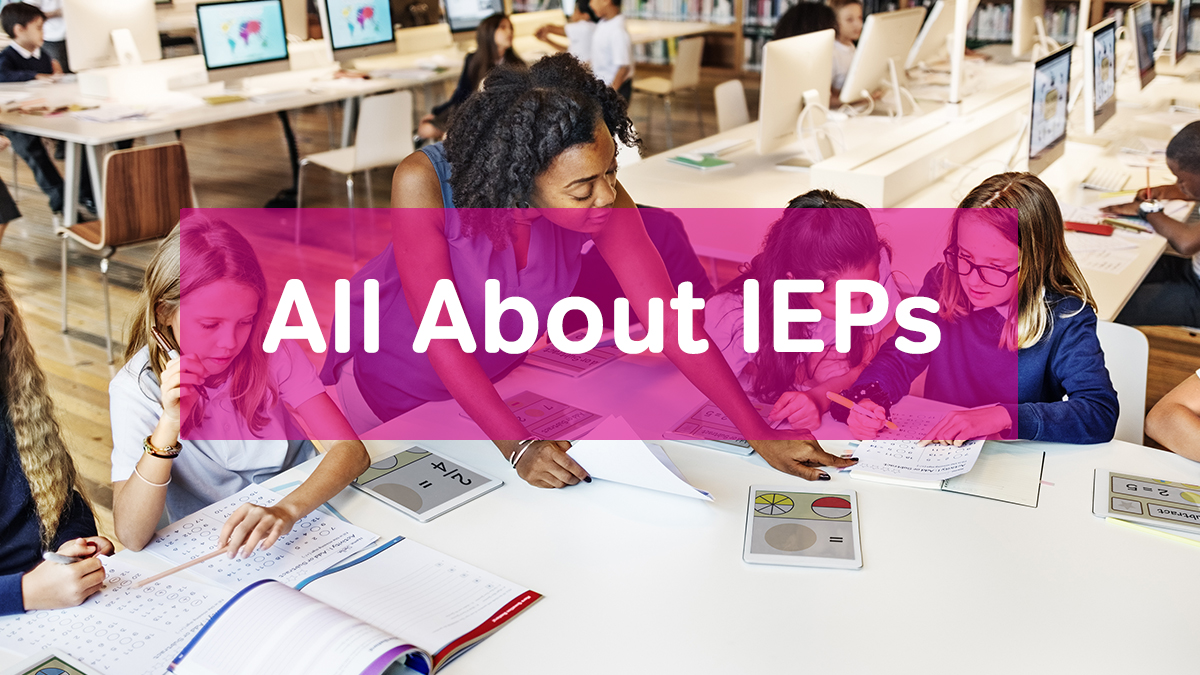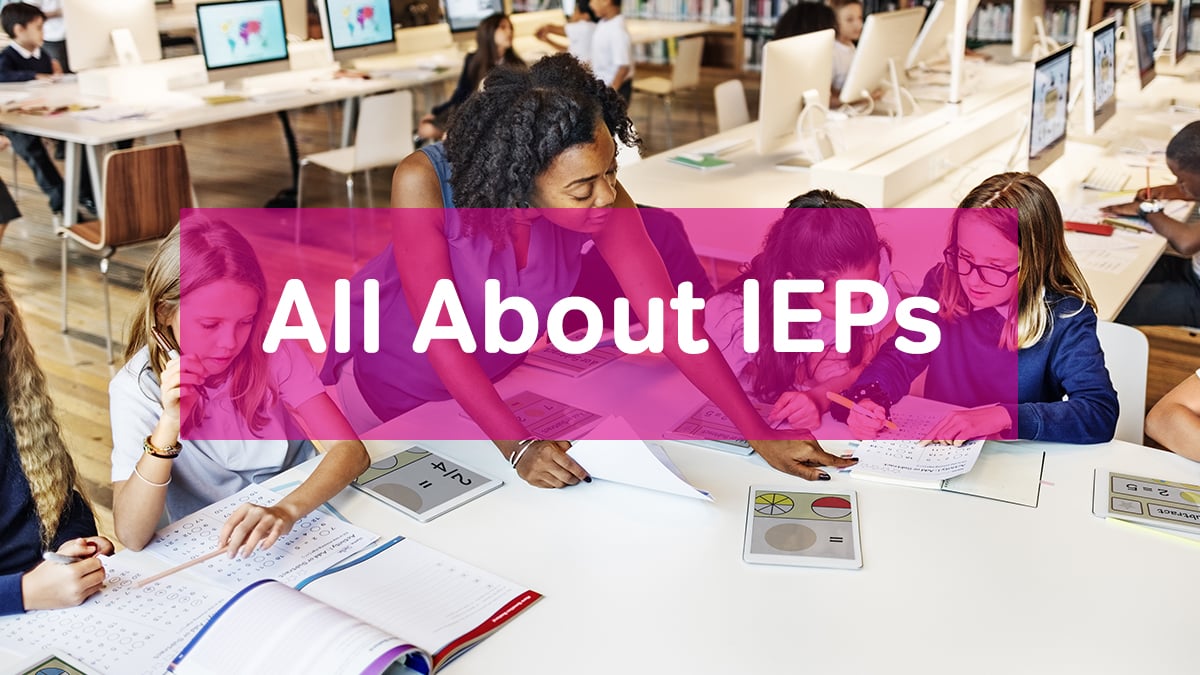
When I was a new teacher, I had several kids in my class that had something called an IEP. Trouble was, I had no idea what an IEP was! Now, they are so common that they are usually asked about during teaching interview questions. I’m back, Master’s in Special Education in hand, to help you know more about IEPs than I did my first year.

What Is an IEP?
IEP stands for “Individualized Education Program” (it’s also often, but mistakenly, called an Individualized Education Plan). An IEP is, as the name implies, individualized for the needs of a certain child in the school setting.
Usually, children with IEPs have some type of disability or other special need(s). The IEP describes the accommodations or modifications a student needs to be successful. Accommodations are things like different seating arrangements or necessary equipment. Modifications are things like changes in work load or curriculum level. Just like a child with poor vision needs eyeglasses to be successful, a child with an IEP needs certain accommodations and modifications to be successful.
IEPs and General Education
Unfortunately, too few general education (“gen ed,” that is, not special education) teachers get proper training on how to teach students with differing abilities. I get it, that can be intimidating. But, let me let you in on a little secret: there isn’t a book of magic tricks special educators are given! It just comes down to knowing your students and individualizing lessons for each one. I swear, that’s easier than it sounds. 😉 (More posts on that coming soon!)
Know that your students with IEPs are just as much “your kids” as the kids in your class who are typically developing. Learning to teach them well will make you a better teacher for ALL your students. Plus, inclusion of students of all ability levels in the classroom community has been shown to make kids more kind and empathetic. Furthermore, academic scores of kids in inclusive classrooms is the same or better than children in segregated classrooms.
Legal Things to Know About IEPs
IEPs are set up as part of a law called “IDEA” (pronounced I-D-E-A, not “idea”). This stands for the Individuals with Disabilities Education Act. Without getting into too much legal mumbo-jumbo, there are two important legal things for teachers to know about IEPs.
1. They Are Confidential
That means that only the people involved in the child’s education are allowed to know that they have an IEP. You can get in trouble for telling another kid’s parents, “Well, Miriam has an IEP,” or anything like that. Similarly, any information about diagnoses, treatments, and specific accommodations or modifications is also confidential. Be sure not to post or leave laying around in your classroom any confidential information (like the IEP paperwork itself).
2. You Must Comply With Them.
A lot of gen ed teachers fall into the trap of thinking that the IEP is the special educator’s responsibility. You may even hear this attitude among other staff or some special educators themselves. But it’s not true!
When you take the time to learn about your student’s IEP and how to address it, your student will learn more and you will both be happier. (Often, this will cut down on behavior issues as well!) Not only will it make life easier to comply with the IEP, you can actually be sued if you don’t. Yikes!
You may have certain things you need to document throughout the year to show at IEP meetings. Sit down with the special educator at the beginning of the year and review the IEPs together. Discuss how you can implement accommodations and modifications in the classroom, what you should document, and how you can get support from her if you need it.


